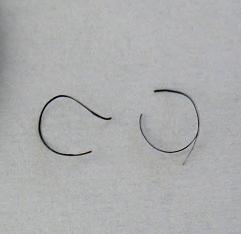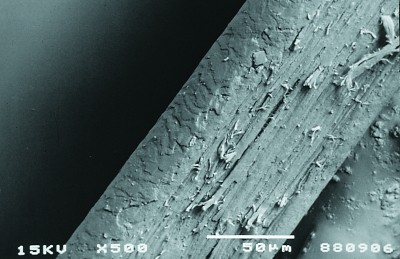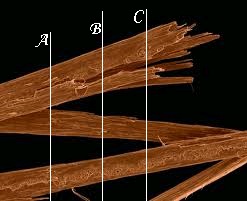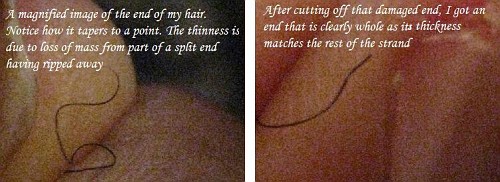@
Growingmyhairlong, I'm with @
pre_medicalrulz, S&D is not only a waste of time but a futile task. To effectively search and destroy, you'd have to look every one of your 100,000+ strands otherwise what's the point when you aren't inspecting every single strand. What's more, would you see a split as small as this dot
.? Or if you looked at two strands and saw this:
...would you only trim the one with the fork?
If so, well you just failed the search and destroy test. Coz what you don't know is the strand that doesn't look split is actually a POST split strand. I tampered with the image to show what happens if splits are not cut off. One arm tears off. So if you're busy scrutinizing your ends to see which are split, without measuring the diameter of each strand, how can you tell that the ends that don't look split are those of a whole strand and not part of a strand? Coz part of a strand means you have damage like this:
And what good does it do you to hold onto that^^ when it can't hold moisture and isn't strong enough to endure normal styling? Leaving it behind just means it'll break in a rugged way that continues the tearing that is known as splitting.
Below is the original image. You can see both locks are damaged:
So you would do better to just dust all your strands on a regular schedule. If you are still seeing splits after you trimmed, it means you didn't cut off all the damage. You can't go for months w/o dusting and get away with a small trim. Regular dusting has to be done to maintain ends but if you are just starting off, you need a nice good cut to get rid of all damage.
If your ends look like the image below and you cut at C, then you can see how much damage you leave behind.
Note also the damage on the stands that don't look forked. Goes to show that just coz you can't SEE splits, doesn't mean your hair hasn't already split and split (literally).




